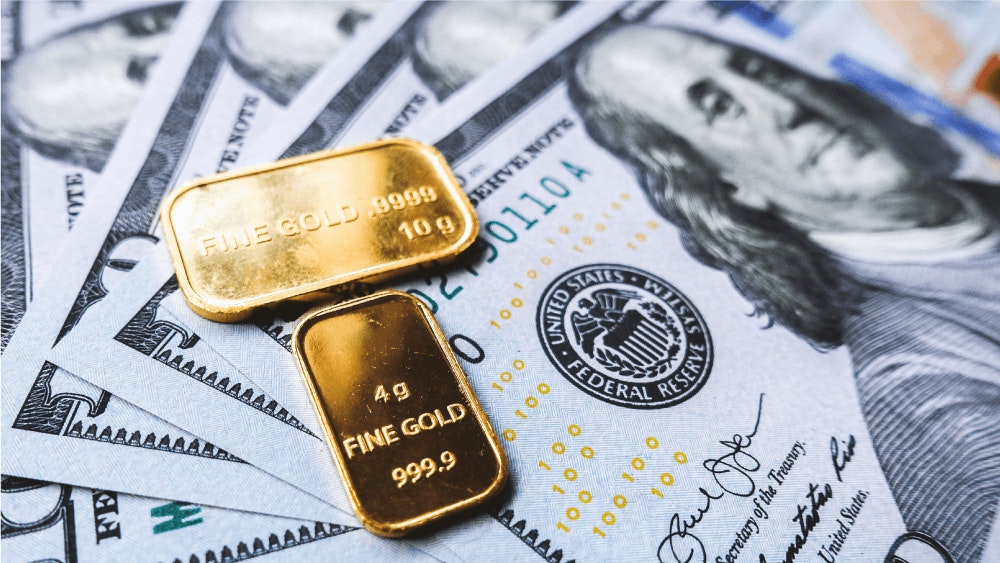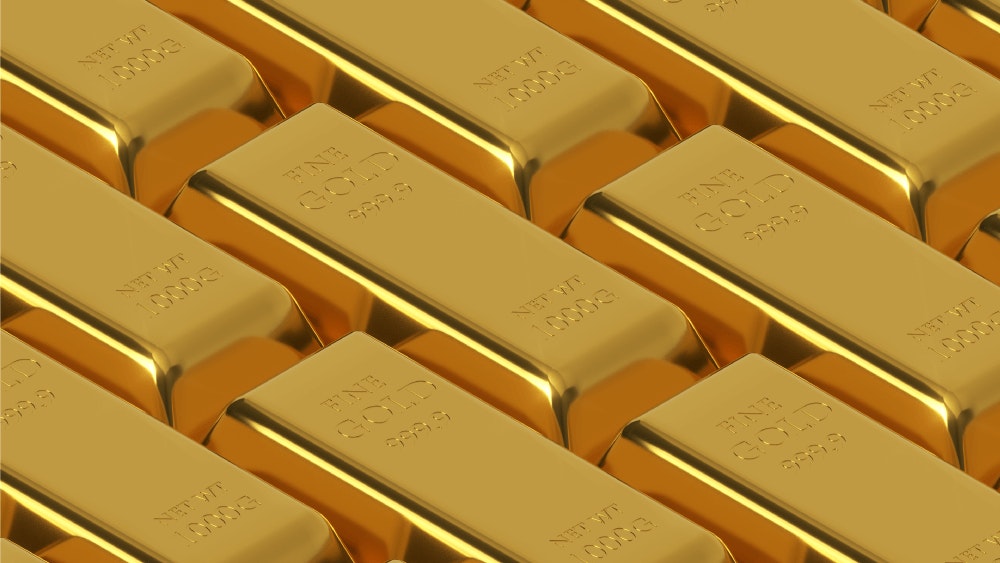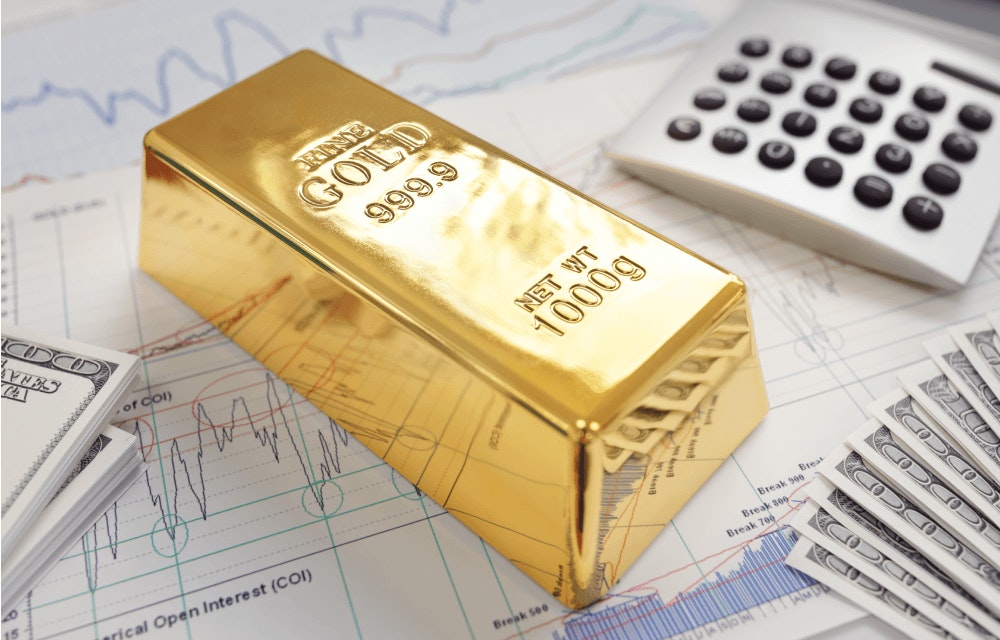Nick Goold
Gold is one of the world’s oldest and most valuable tradeable commodities. For centuries, people have used gold for trade, investment, and wealth preservation. Today, gold remains a key part of the global economy and financial markets, with millions of investors turning to it as both a safe-haven asset and a trading opportunity.
What drives gold price changes?
Gold prices are influenced by many different factors, and the most important drivers can shift depending on market conditions. Below are the key forces that move the price of gold.
Inflation and interest rates
High inflation often boosts gold prices because gold tends to hold its value while the purchasing power of fiat currencies declines. Central banks use interest rates to control inflation, making monetary policy decisions critical for gold traders. Since gold does not generate income like bonds or savings accounts, higher interest rates usually reduce gold’s appeal and can push prices lower. Conversely, low rates often make gold more attractive as a hedge against inflation.

The US dollar
Gold typically moves in the opposite direction of the US dollar. When the dollar strengthens against other currencies, gold becomes more expensive for international buyers, which reduces demand. When the dollar weakens, gold becomes cheaper for foreign investors, boosting demand and often driving prices higher.
Physical demand
Jewelry demand is one of the largest drivers of gold prices. In countries like India and China, gold jewelry plays a huge role in weddings, festivals, and savings traditions. Demand often rises during strong economic growth but can decline in times of crisis, as seen during the COVID-19 pandemic when lockdowns reduced jewelry sales. Gold is also used in small but important amounts for industrial and electronic applications.
Investment demand
Gold is widely seen as a safe-haven investment. During times of economic downturn, stock market volatility, or geopolitical conflict, investors often turn to gold to protect their wealth. Investment demand includes physical gold (bars and coins) and financial products such as gold ETFs and mutual funds. According to the World Gold Council, investment demand averages around 1,000 tonnes per year but can fluctuate significantly depending on market sentiment.

Gold production (supply)
Gold supply comes mainly from mining, with about 3,500 tonnes produced annually plus another 1,100 tonnes from recycling. Changes in mining output or disruptions to supply can influence gold prices. China, Australia, Russia, and the US are currently the largest producers, while South Africa—once dominant—has declined in output in recent years.
Central banks
Central banks are among the largest holders of gold reserves. Their actions—buying to diversify reserves or selling to raise cash—can shift global supply and demand dynamics, directly affecting gold prices. For traders, central bank reports and policies are important signals to watch.
How to trade or invest in gold
There are many ways to invest in gold, from buying physical bullion to trading financial instruments. The price of one troy ounce of gold is represented by the code XAU, a reference to the gold standard. Here are the main ways traders and investors can gain exposure to gold:
Gold bullion
Buying physical bars and coins is the traditional way to invest in gold. It provides direct ownership and protection against inflation but requires secure storage and insurance, which adds costs.

Spot gold
Spot gold refers to the current market price for immediate purchase or sale. It is the most direct way to track short-term changes in gold prices.
Gold futures
Futures contracts let traders speculate on the future price of gold without owning it physically. These standardized contracts trade on exchanges such as COMEX (US), the London OTC market, and the Shanghai Gold Exchange. Futures are widely used by both investors and hedgers but involve higher risk due to leverage and margin requirements.
Gold options
Options contracts give traders the right (but not the obligation) to buy (call) or sell (put) gold at a set price before expiration. They allow flexibility with limited risk (the premium paid), making them useful for hedging or speculation.
Gold stocks
Instead of trading gold directly, investors can buy shares of gold mining companies. While gold prices influence these stocks, company performance and management decisions also play a role.
Gold ETFs
Exchange-traded funds (ETFs) allow investors to gain exposure to gold without buying physical bullion. Gold ETFs trade like stocks and track gold prices, making them one of the most accessible investment vehicles for retail traders.
Gold CFDs
Contracts for Difference (CFDs) let traders speculate on gold price movements without owning the metal. CFDs allow both long (buy) and short (sell) positions and can be leveraged, meaning you can control larger positions with less capital. However, leverage increases both potential profits and risks.

Gold trading strategies
Successful gold trading requires a strategy that matches the asset’s behavior. Some of the most popular strategies include:
Trend trading
Traders use moving averages, trendlines, and other indicators to identify strong uptrends or downtrends. Once a trend is confirmed, they trade in the direction of the trend until signs of reversal appear.
Day trading
Gold’s high liquidity makes it popular with day traders who profit from intraday price swings. Traders rely on technical setups, news events, and volatility to make quick buy or sell decisions within the same trading session.
Price action trading
Instead of relying on indicators, price action traders analyze recent price patterns and candlestick formations to determine entry and exit points. This strategy focuses on market psychology and raw price behavior.
Arbitrage trading
Some traders exploit price differences in gold contracts between exchanges, such as COMEX, the London Metal Exchange, and the Shanghai Gold Exchange. This strategy requires speed and precision but can yield low-risk profits.
Advantages of trading gold CFDs
Gold CFDs offer flexibility for traders who want to speculate on price movements without owning physical gold. They save on storage costs and allow trading in both directions. If you expect gold prices to rise, you can go long. If you expect them to fall, you can go short. However, CFDs are leveraged products, so losses can exceed deposits if not managed properly. Understanding risk and using stop-loss orders is essential when trading gold CFDs.
Conclusion
Gold has been a cornerstone of global trade and investment for centuries and continues to play a vital role in modern markets. Whether you invest through bullion, ETFs, futures, or CFDs, understanding what drives gold prices—such as inflation, the US dollar, central banks, and investor sentiment—can help you make smarter decisions. For traders, gold offers multiple strategies, from trend trading to arbitrage, while investors can choose between physical assets and financial products. Regardless of the method, risk management and research are key to long-term success in gold trading.

